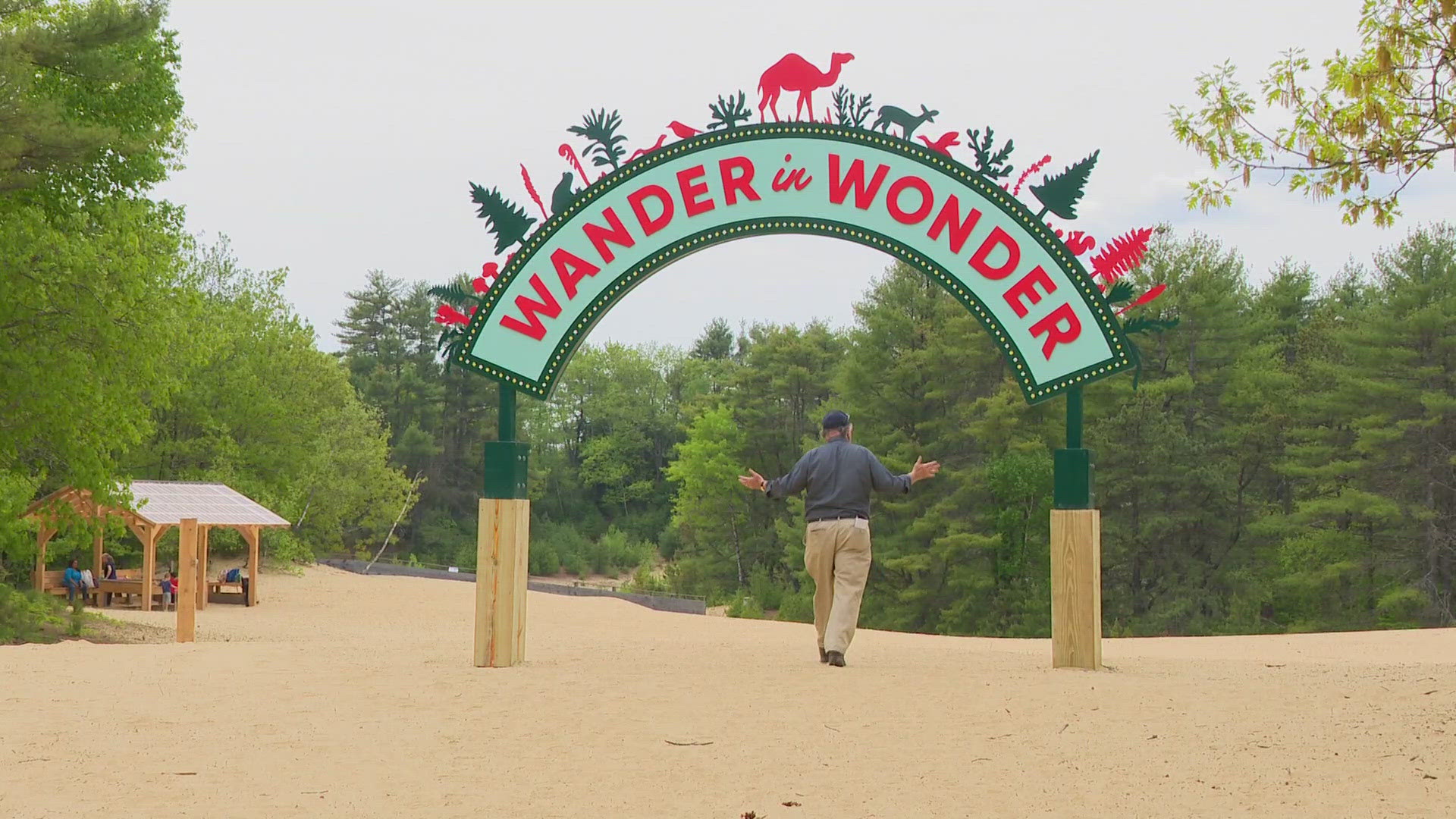FREEPORT, Maine — It’s a place unlike any other in Maine, where acres of fine sand stretches out into the distance, complete with sand dunes, looking much like, well, a miniature desert.
Welcome to the Desert of Maine, an ecological oddity that’s been a tourist attraction for a century.
Mela Jones, who bought the desert with a partner in 2018, describes it as beautiful. But she also admits they purchased the place without a deep knowledge of what it is.
"I didn’t know the rich history when we decided to buy it," Jones said. "Something inside of me told me this was very special."
She said research over the following years proved that feeling was correct.
The history of the desert traces back to the mid-1800s when the land was part of the Tuttle family farm. Jones said the family decided to raise a herd of sheep, which turned out to be a bad decision.
"Sheep graze very close to the ground," she explained. "The topsoil on the farm was very thin, and couldn’t easily regrow the grass. As a result, the large deposit of glacial sand underneath began to work its way through."
"So, just like the dust bowl, the soil starts to dry up and blow away," Jones said. "And by the early 1900s, there was this amount [of sand] exposed, and by the 1930s there were 100 acres."
The farming days on the land were at an end and, in 1924, Jones said the owners opened the land as a tourist attraction.
"It was called the Desert of Maine so people coming from New York or Boston would want to come see it."
Those who visited the desert back in the day might not recognize it now. The sand is still there, of course, but the property has had a makeover because Jones said it had become less appealing by the time they bought it.
"I do think there was a time when this place was marketed like 'we have the largest ball of twine' kind of place,” Jones said. “ But that’s not what it is now."
Indeed, she made the comment while sitting at a patio table outside the modern visitor center and snack bar, next to the playground and an attractive mini-golf course.
None of those features existed when Jones and her partner bought the place.
They have also built gravel paths around the property for a sightseeing train to travel and take visitors to some of the more distant kid-friendly locations.
They have also taken the existing campground—described by Jones as looking like "a 1980s RV park" when they bought it—and transformed it with elegant rental cabins. This summer, they’re adding large rental tents and domes to expand the “glamping” experience.
Without providing specifics on costs, Jones said she and her partner have invested a significant amount of money in upgrading the desert, adding there will be “more to come”.
That will include art.
Jones said she has formed a nonprofit organization called the Center for Art and Ecology, which is dedicated to making the Desert of Maine a place for both performance and exhibition art. The plan is to rebuild the large old barn that once stood near the present visitor center and use it as a focal point for the arts programs.
Surprisingly, perhaps, this all is happening while the actual desert is shrinking. Brush and pine trees have reclaimed much of the land that was once bare sand. Many of the trees are mature and tall, and shade parts of the train trail. The desert that Jones said once covered 100 acres is now about 25 acres.
She hopes visitor numbers continue to grow with the added features and upgraded image, and said that even if the Desert of Maine is smaller than it was, it remains a unique sight in Maine.
“I think it's pretty breathtaking. It's spectacular to see the sand in the middle of the forest," she added.

